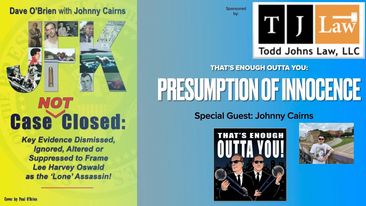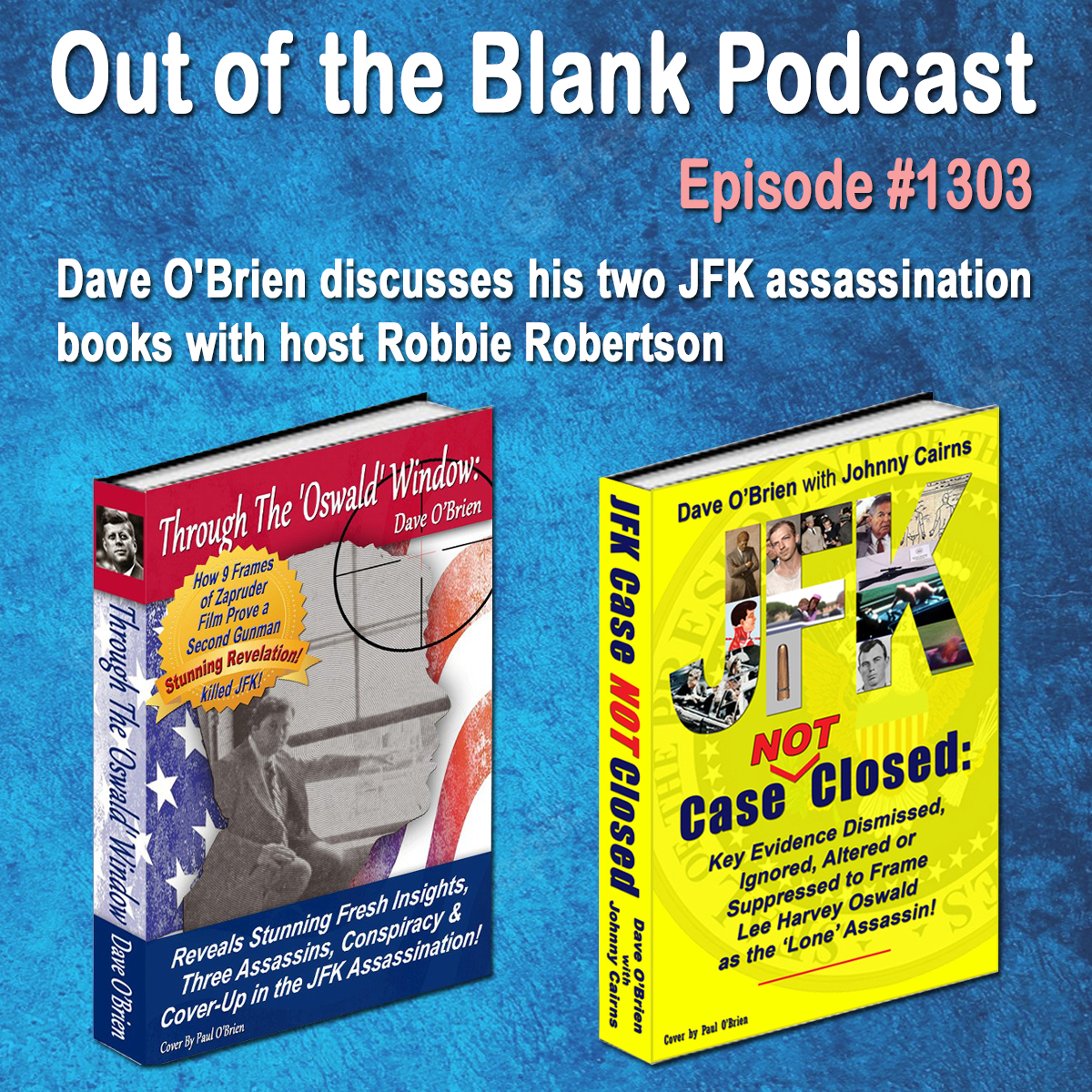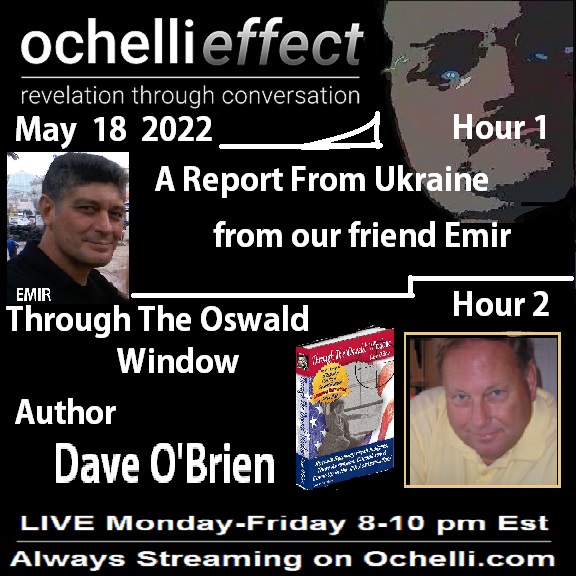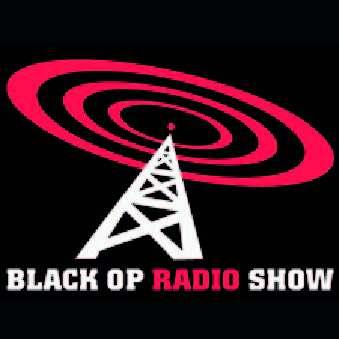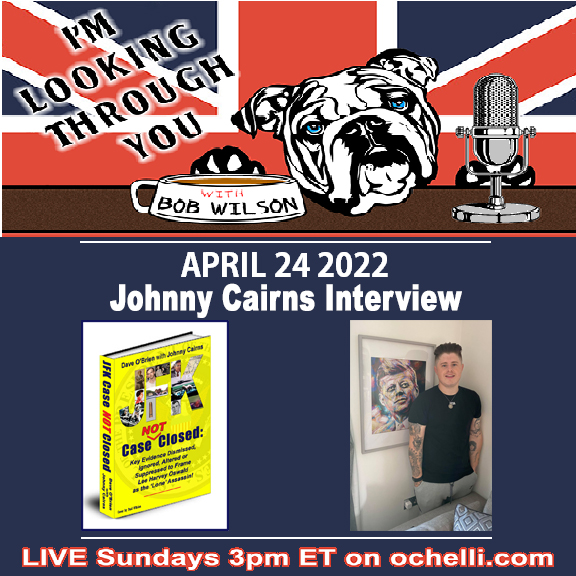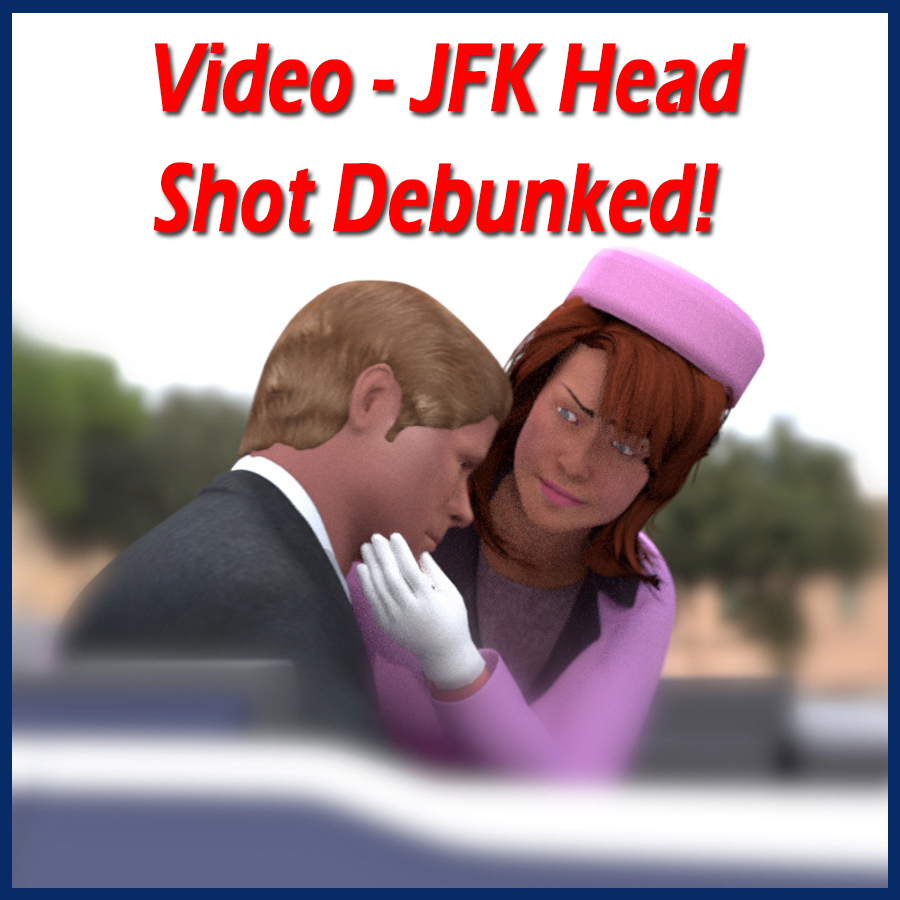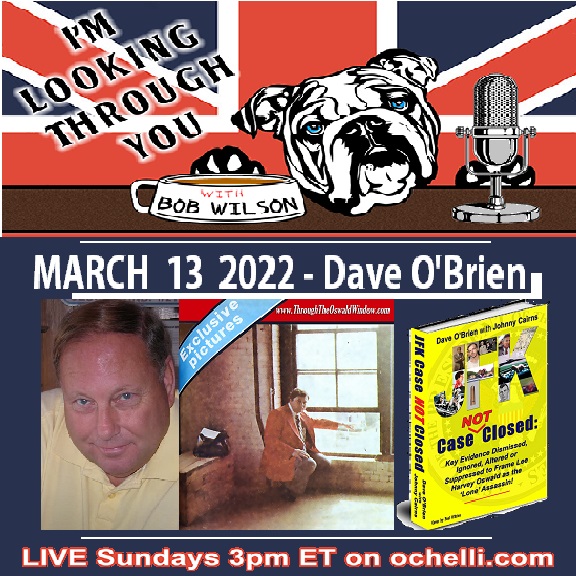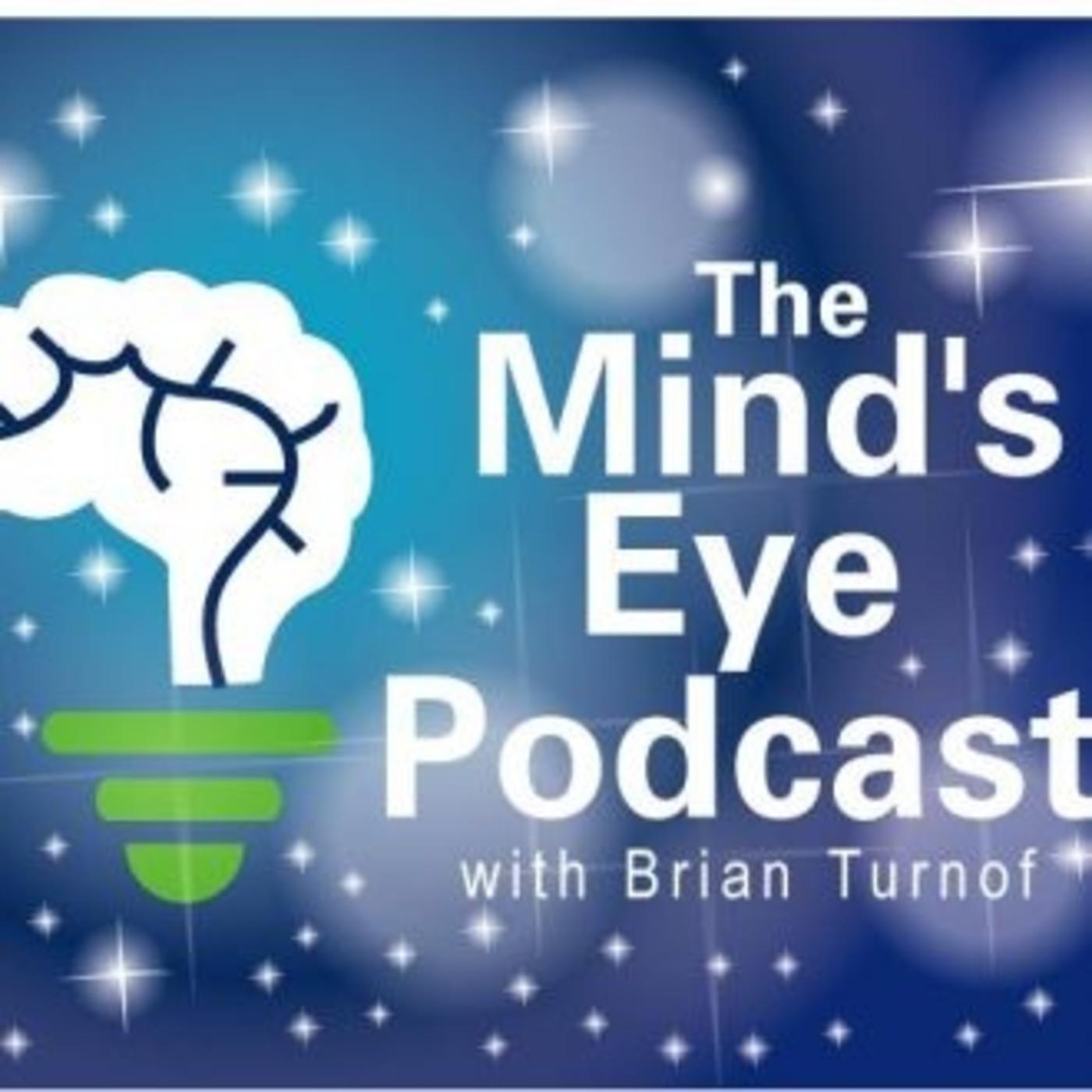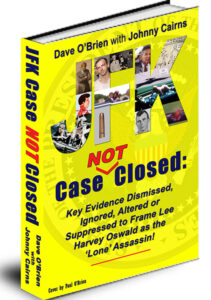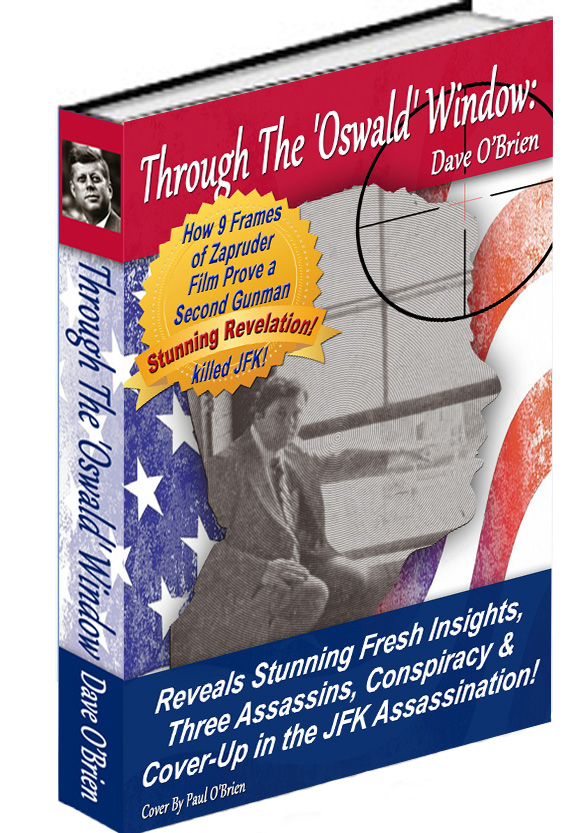The Trial of Accused Assailant Lee Harvey Oswald in the Murder of Dallas Police Officer J.D. Tippit!
by Dave O’Brien
Author:
Through The ‘Oswald’ Window
When Dallas police officer J.D. Tippit was murdered less than an hour after President Kennedy, was it also at the hand of JFK’s accused assassin Lee Harvey Oswald?
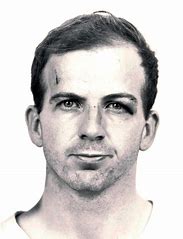
That’s exactly what two U.S. government investigations 15 years apart have concluded – Oswald was a double murderer on November 22, 1963!
The JFK assassination has evolved into never-ending conspiracy theories with well over 1000 books that challenge the Warren Report findings, from Mark Lane’s Rush to Judgement to this author’s revised book released in early 2019.
The credibility of the government’s findings have not withstood the test of time thanks to the work of independent researchers and documents released over the years as a result of the Freedom of Information Act.
The latest polls show that nearly 65% of Americans believe their 35th President died as a result of a conspiracy.
THE BIG WHAT IF
Old codger researchers like yours truly and new age researchers like Johnny Cairns have found an intriguing way to examine the tragic events in Dallas based on this haunting question:
What if Lee Harvey Oswald had lived to stand trial?
Cairns and I agree that if Oswald was not silenced forever by Jack Ruby nearly 48 hours after he allegedly shot Kennedy and Tippit, the historical record of both murders would be vastly different today.
Why?
A public trial would have guaranteed that the accused assassin of either man would have received due process and rights under the law, starting with quality legal representation. As Cairns points out, “The one thing that has remained constant throughout the whole Oswald case is the insistence of his innocence. He maintained his innocence from the moment of his arrest until the moment he was shot to death whilst in police custody. That is crucial.”
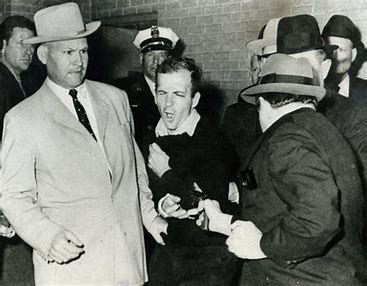
Not only was Oswald denied any legal council to help him defend his presumption of innocence while in police custody after his arrest, when the family hired attorney Mark Lane after Ruby shot and killed him, the lawyer was never permitted to represent the interests of Oswald before the Warren Commission hearings.
As a result, no witnesses called before the Commission were cross examined as per a court of law. The suspicious autopsy report on JFK went unchallenged, ballistic tests and other medical evidence were ignored and most evidence suggestive of Oswald’s innocence was either not investigated or not heard by the Commission.
There is no record of any push back being applied to reports from the Dallas police department, the Secret Service investigation or the damning files against Oswald submitted by Naval Intelligence, the CIA and the FBI.
When the Warren Report was released in 1964, it was treated by the government and the mainstream media as the definitive explanation of what happened to President Kennedy and officer Tippit on that fateful November 22 in Dallas.
With absolutely no legal rights afforded to Lee Harvey Oswald, he was branded the ‘lone’ murderer of both men. Cased closed and the public bought it until the mid-1970s.
If Oswald had lived to stand trial, a defense team headed by Mark Lane may have won acquittal on the grounds of reasonable doubt, the basic standard of law never imposed upon the Warren Commission.
Researcher Johnny Cairns believes a trial may have acquitted Oswald in the Tippit killing thus causing a real problem for the pending JFK assassination trial months later.
THE TIPPIT TRIAL
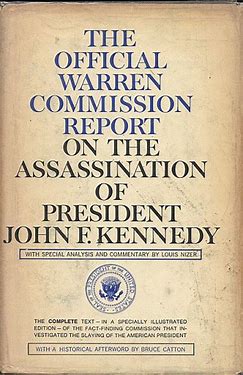
We can reasonably assume that had Oswald not been murdered, he would have likely stood trial for the fatal shooting of Dallas cop J.D. Tippit before standing trial as the accused Presidential assassin.
The government would not have wanted to rush its case against the President’s accused assassin, preferring to let Dallas seek justice against a charged cop killer.
However, the prospect of Oswald’s judgement at a Tippit trial could have been a risky double-edged sword.
A guilty verdict at a Tippit trial would have swayed public opinion against Oswald as the President’s likely killer, making a second guilty verdict more palatable.
A not guilty verdict in the Tippit affair would likely have thrown the Kennedy case into chaos, leaving the public to ponder if the government got the right man.
CASE NOT CLOSED!
This report deals with some of the controversial evidence that would have been presented in the case of the People versus Lee Harvey Oswald in the death of Dallas police officer J.D. Tippit.
As the J.D. Tippit funeral gripped the Dallas police community with the usual ceremonial send-off for a fallen officer in the line of duty, it was lost in the national psyche of a grief-stricken country.
The death of the accused killer within hours of the J.D. Tippit memorial service ensured that the Dallas cop would forever be little more than a footnote in history, even though linked to the JFK assassination by the same killer.
Sure enough, 15 years after the Warren Report found Oswald to be Tippit’s executioner, the House Select Committee on Assassinations (HSCA) devoted little more than seven pages to the murder even though independent researchers had publicly raised significant doubts about the case against Oswald.
As researcher Johnny Cairns argues, the discrepancies discussed here would not and could not have been ignored or suppressed from a jury at a public trial.
The troublesome evidence that the Warren Commission and the HSCA failed to properly investigate but would have been presented in defense of Oswald at a public trial falls into these categories:
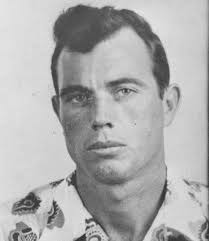
1. Timing – As will be shown, the Oswald – J.D. Tippit timeline of their ill-fated rendezvous casts doubt that the alleged assassin could have gotten to the Tippit kill site from his rooming house in the time necessary to shoot and kill the officer.
After allegedly acting as the ‘lone’ assassin of President Kennedy, the Commission says Oswald stopped by his rooming house as part of his escape plan and picked up a jacket and revolver used to slay the Dallas patrolman.
As you will see, the jacket, revolver and the timing of Oswald’s trek to Tenth Street and Patton Avenue where he was apparently confronted by Tippit would have all been contested as part of Oswald’s defense at trial.
2. Witnesses – The eyewitness and ear witness testimony at trial would have established reasonable doubt that it was Oswald who gunned down officer Tippit.
3. Physical Evidence – The jacket found at the scene, believed to belong to Oswald, as well as a lack of fingerprints left at the scene, are two examples of how the circumstantial evidence does not stack up against Oswald.
4. Ballistic Evidence – The ballistic evidence involving bullets, shell casings and Oswald’s revolver should have sealed Oswald’s fate as a guilty cop killer – but it doesn’t!
5. Mystery Rendezvous – As you will discover, the circumstances that brought Tippit and Oswald together for a deadly encounter do not add up for either the accused or the victim. But what does that suggest?
TIMING TROUBLES
As researcher Cairns points out, there are two distinct timing issues at play when it comes to the presumed murder of Tippit by Oswald:
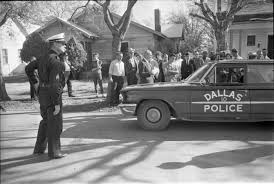
A) The time of the shooting:
The Warren Commission concluded that Oswald gunned down officer Tippit at 1:16 p.m., exactly 46 minutes after Kennedy was assassinated four miles away in Dealey Plaza.
However, at least two witnesses who took stock of the time claim the shooting occurred before 1:10 p.m. and as early at 1:06 p.m.
So, why does the seven to 10 lesser minutes matter?
Cairns believes the added time was necessary “to allow Oswald the time to get from his rooming house to the murder site in time to shoot Tippit.”
A problem for the Warren Commission was Earlene Roberts, the housekeeper at 1026 North Beckley Avenue where Oswald rented a room. Roberts insists she saw Lee, who had just left the house, waiting at a bus stop at 1:03 p.m. It is believed that Oswald didn’t wait for the bus and instead walked away in the direction of the fateful encounter at Tenth and Patton.
However, as noted researcher James DiEugenio pointed out on the website KennedysandKing.com, when Warren Commission counsel David Belin tried to retrace Oswald’s route from the rooming house to the Tippit kill site by foot, it took him 17 minutes and 45 seconds at a normal walking pace.
Yet, witnesses place the murder as early as 1:06 p.m. meaning that Oswald would have had to get to the Tippit scene from the bus stop by foot in three minutes! This would have been impossible had Oswald been a noted Olympic sprinter.
Even if the Tippit shooting had occurred at 1:16 as concluded by the Commission, the Belin experiment suggests that Oswald would not have arrived at Tenth and Patton until 1:20 p.m.
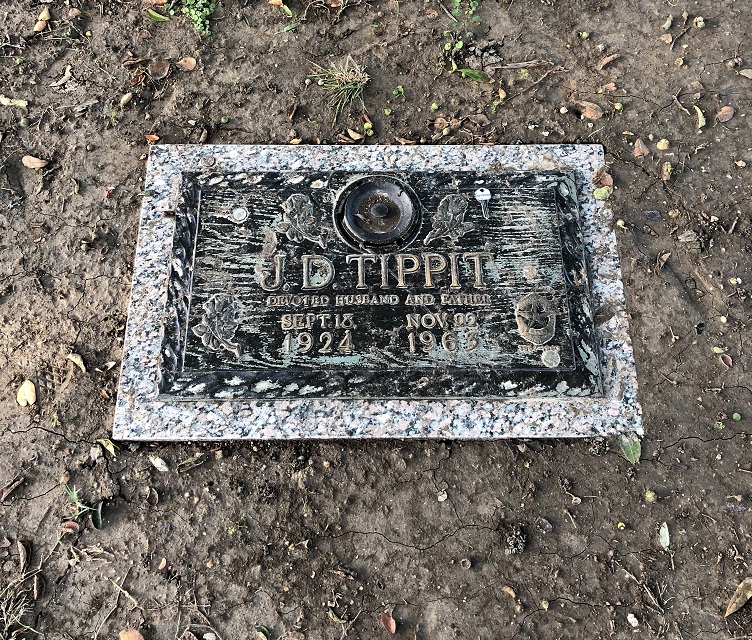
“Unless he had a jet pack, there’s no way he’s covering that distance in three minutes,” muses Cairns. “I’ve spoken to a lot of researchers who have done this time test from Oswald’s rooming house to Tenth and Patton.
“Even at a brisk walk, it takes between 12 to 14 minutes,” notes Cairns who believes this timing issue would have been a headache for the prosecution’s case against Oswald.
Might a jury have been sent on a field trip by a clever defense attorney to ascertain that Oswald could not have arrived at the scene in time to be Tippit’s slayer?
When Commission counsel Belin took almost 18 minutes to get to the Tippit crime scene, the Commission decided that the reported 1:06 to 1:09 time of the shooting was not possible.
Accordingly, witnesses associated with the 1:06 to 1:09 time frame were dismissed by the Commission, which then set the time of the murder firmly at 1:16 p.m.
Another timing oddity involves Oswald’s landlady. Earlene Roberts told the Secret Service that as Lee was in his room, a Dallas patrol car pulled up in front of the house very soon after 1:00 p.m. The cop car honked its horn twice and drove off in the direction of the Oak Cliff section where the fatal alleged Tippit-Oswald confrontation would take place.
Ms. Roberts identified the Dallas police car as number 101. Strangely, Tippit’s police car was number 10, leaving us to wonder if she slightly misread the numbering on the car.
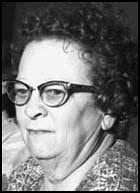
Literally seconds later, as if on cue, Oswald left the rooming house, lingered for a short time at the nearby bus stop and then headed on foot in the direction of the downtown section of Oak Cliff.
This would not only take Oswald in the direction of the Tippit murder scene, but also the Texas Theater where Oswald was eventually apprehended and taken into police custody.
B) Timing of Oswald’s arrest:
According to the Warren Report, Oswald shot Tippit at 1:16 p.m. and raced by foot to the Oak Cliff business district where he ducked into the Texas Theater to avert arrest.
Here, we are asked to believe that after killing a cop, Oswald panicked and ‘ran’ into the business section of Oak Cliff.
Yet, after apparently killing the President of the United States, Oswald demonstrated no urgency in his movements from the Book Depository Building to his rooming house where Earlene Roberts noted his calm demeanor even after informing him that the President had been shot!
Oswald’s arrest came after good Samaritan Johnny Brewer says he saw a man, which turned out to be Oswald, enter the theater without purchasing a ticket, so he called the police.
With nothing to indicate the man was in any way associated with either the Tippit or Kennedy murders, the police responded to a report of a man trying to sneak into a movie theater by sending multiple police cruisers and even a few detectives to arrest a petty thief!
Here again, a timing issue arises that most assuredly would have played out in a courtroom.
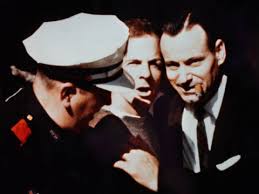
Two theater employees, Jack Davis and Butch Burroughs, told investigators that they saw Oswald inside the cinema no later than 1:15 p.m.
Burroughs, who worked the concession counter that day, said he served Oswald food and drink and observed nothing suspicious about him. This eyewitness testimony begs two questions:
1. Desperate to Hide? – If Oswald was so panicked to hide from the police that he didn’t take the time to purchase a movie ticket and avoid appearing suspicious, why would he so casually stop at the snack counter and risk being identified before heading into a darkened theater?
2. From Tippit to Theater – Although the Tippit shooting site was only a few minutes away from the theater, Oswald clearly could not have shot Tippit at 1:16 p.m. if he was already at the theater by 1:15 p.m.
Oswald could have shot Tippit between 1:06 and 1:09 and made it to the theater by 1:15 p.m. but this does not work for the Warren Commission because it has been established that Oswald could not have gotten to Tenth and Patton from his rooming house to shoot Tippit as early as 1:09 p.m.
B) THE TROUBLE WITH WITNESSES
Eyewitness and ear witness testimony is often relevant at a trial to establish the guilt or innocence of the accused, but such testimony can be very unreliable.
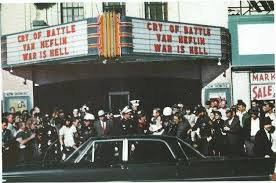
You and I can witness the same crime and see or hear it quite differently.
At a trial, the degree of relevance of witnesses can depend on other evidence such as medical or ballistic findings.
In the matter of Oswald as the killer of officer J.D. Tippit, the witness testimony is all over the map. Here is a brief outline of the testimony of key witnesses to the Tippit murder:
MR. & MRS. DONALD HIGGINS
While they didn’t witness the shooting, they believe they saw the assailant running away from the scene in the seconds that followed. They noted the time of their observations to be 1:06 p.m.
“He definitely wasn’t the man they showed on television,” Mrs. Higgins said after seeing Oswald in police custody.
HELEN MARKHAM
Although Helen Markham couldn’t definitively identify Oswald in a police lineup as the man she saw shoot Tippit, she eventually picked Oswald because “something about this man sent shivers all over me.”
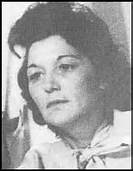
Markham became the Warren Commission’s star witness in the Tippit case even though she told the FBI that the shooter was approximately 18, red complexioned and had black wavy hair. Oswald was 24, fair skinned and had short brown receding hair.
It was Markham who said Oswald was walking east on Tenth Street when Tippit’s cruiser approached him from behind.
This matched the Warren Report’s account of events so Markham became its key witness despite the reservations of Commission staffers Norman Redlich, Wesley Liebler and Joseph Ball, all of whom thought her to be a “screwball.”
Sure enough, as recounted on pages 50-51 in Through The ‘Oswald’ Window, Markham’s testimony and recollection of events is muddy at best even when not under cross examination as would have happened in a courtroom.
Before the Warren Commission, Helen Markham became the star witness for Oswald’s guilt as the killer of officer J.D. Tippit. At a public trial, she could just as easily have been the star witness for the defense who has the lesser burden of establishing reasonable doubt.
JACK TATUM
This witness appeared before the HSCA and reported that as he was driving west along Tenth Street and was passing a police car, the shooting took place.
He said the gunman fired a few shots, then walked around the car, took deliberate aim at Tippit on the ground and fired one more shot before fleeing the scene.
Although accepted by the Commission as how the shooting transpired, Tatum could not identify Oswald as the man he saw fire the shots.
FRANK WRIGHT
After he heard gunshots, he ran out of his house and saw a man standing near a police car.
According to Wright, this man ran and jumped into a nearby parked gray car and sped away on Tenth Street. This is in complete contrast to other witnesses who said they saw the assailant depart the crime scene on foot.
DOMINGO BENEVIDES
This witness claims he was sitting in his truck just 15 feet away when the shots sounded, drawing his attention to the police car.
Benevides was not asked to attend any of the four police lineups but later told the Warren Commission that when Oswald’s picture appeared on TV later that day, it resembled the man who he saw shoot Tippit.
WILLIAM SCOGGINS
Although Scoggins picked Oswald out of a police lineup on November 23, when later interviewed by FBI agents and shown a mug shot of Oswald and several other men, he picked a man other than Oswald as the person he saw shoot Tippit.
Had Scoggins appeared at a public trial on behalf of the prosecutor’s case, his credibility as a viable witness would have been challenged. Was he telling the truth to the Commission or the FBI?
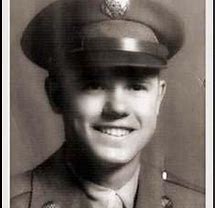
ROGER CRAIG
The Dallas deputy sheriff did not witness the Tippit murder but stated that when news of the police officer’s shooting came over the police radio system, he noted the time of 1:06 p.m. on his watch.
It was also Craig who said that in the few minutes following the assassination in Dealey Plaza, he is certain he saw Oswald departing the Book Depository Building, enter a light colored station wagon as a passenger and left the scene.
T.F. BOWLEY
The Warren Report incorrectly identified Domingo Benevides as the witness who used Tippit’s radio microphone to call in the shooting to the police station.
Actually, the call was made by T.F. Bowley, who coincidentally was not called before the Warren Commission.
Bowley told New Orleans District Attorney Jim Garrison that he arrived at the scene soon after the shooting, stopped his car and saw Tippit lying in the street by his cruiser.
By the time he checked on Tippit and thought to use the police radio system, the time on his watch was 1:10 p.m.
WARREN REYNOLDS
Reynolds claims he saw a man leaving the scene and stuff a revolver into the belt of his pants.
He stated that he could not say it was Oswald he saw fleeing the scene. This witness stood by this story two months after the tragic day when finally questioned by the FBI.
Two days after the FBI interview, Reynolds miraculously survived a gunshot wound to his head, which evidently jarred his memory. It was Oswald he saw fleeing with a gun.
TED CALLAWAY
He is a second witness who says it was Oswald he saw running from the scene.
However, researcher Henry Hurt discredited Callaway’s recollection when he pointed out that the witness had to ask fellow witness Domingo Benevides which direction the suspect was heading when escaping the scene.
Callaway was also friendly with Dallas police detective James Leavelle, the cop in the white suit you see handcuffed to Oswald when Jack Ruby silenced the accused double murderer forever.
Apparently, Leavelle’s belief that Oswald was also Tippit’s killer was good enough for Callaway.
WITNESS WOES
As you can see, witness testimony to the Tippit murder was all over the map. Based on the witnesses, here’s what happened:
• Oswald was the assailant.
• Oswald was not the assailant.
• Oswald shot Tippit on his own.
• Two men killed Tippit and ran off in different directions.
• Tippit was shot at 1:16 p.m.
• Tippit was shot as early as 1:06 p.m.
• The shooter had an automatic firearm that discharged bullet cartridges into the street that were recovered and turned over to police.
• The shooter did not have an automatic weapon. Instead, he manually removed four cartridges and discarded them near the scene.
• The shooter was approximately six feet tall and husky with wavy black hair.
• The shooter was under six feet, slender and had a receding hairline.
As you can see, the eyewitness testimony, on its own, would have served up a smorgasbord of information that possibly would have established reasonable doubt in the eyes of a jury that Lee Harvey Oswald was the killer of police officer J.D. Tippit.
The unreliability of eyewitness testimony would have changed the focus of attention to the physical evidence, such as medical and ballistic findings.
C) IF IT DOESN’T FIT, YOU MUST ACQUIT?
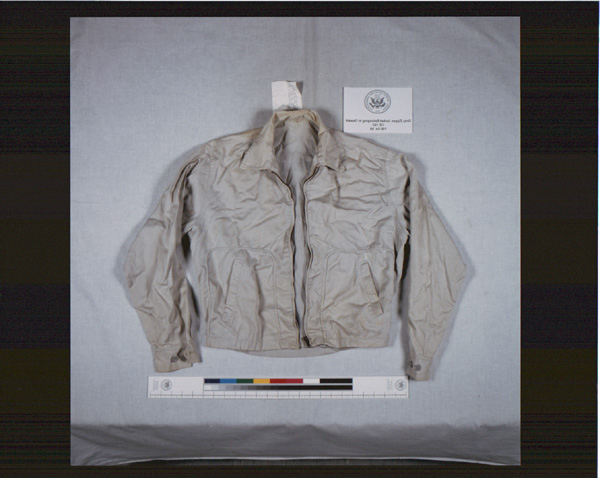
As it relates to the assailant’s wardrobe, eyewitnesses of the murder failed to link Oswald to a ‘white’ waist-length jacket found near the scene. Nonetheless, the Warren Commission determined that this discarded jacket
This jacket found at the Tippit murder scene was linked to Oswald even though it was the wrong size among other doubtful information.
belonged to the accused killer Oswald. Even once in police custody, Oswald’s purported jacket could not positively be identified as belonging to him.
This is one example of evidence that ceased to be problematic once Oswald was shot dead, thereby avoiding a trial. With Oswald having no legal representation before the Warren Commission hearings, the panel was free to shape the evidence as it saw fit.
Had there been a public trial, a jury would have heard:
• Color Confusion – Soon after the shooting, police found a ‘white’ jacket near the scene, which is how the jacket is described by a police officer who called in the discovery on the Dallas police radio system.
However, when the jacket was turned over to the FBI for testing and processing for the Commission (CE 162), the jacket is clearly ‘gray,’ which coincidentally is how Marina Oswald described one of two jackets owned by her husband.
It’s not unusual for there to be confusion with eyewitness accounts
(there was), but a jury would find it odd to learn that during the evidence transfer between the DPD and the FBI, the color of the jacket changed.
• Cleaning Confusion – A DPD report notes a commercial laundry tag was stapled to the inside of the ‘white’ jacket.
In an effort to tie the jacket to Oswald, the Commission had the FBI check out dry cleaning stores in both Dallas and New Orleans but could not come up with a store receipt in Oswald’s name, nor his known alias Alek Hidell.
As a result, the Warren Report did not mention the laundry tag or the FBI’s failed effort to find any evidence linking Tippit’s accused killer to the jacket.
• A Wife’s Tale – A jury would have heard Marina Oswald testify that the jacket purportedly owned by her husband was unfamiliar to her and for good reason:
Marina testified to the Commission that her husband owned two jackets but could not recognize CE 162 as being one of them. This is significant because she further testified that she laundered all of Lee’s clothing, including jackets and could not recall him ever using a laundering service.
• Size Matters – Another problem raised by Marina pertained to the size of CE 162, which was a Medium. Marina stated that all the shirts and jackets she washed for Lee were size Small.
Is this why the DPD didn’t compel Oswald to wear the found jacket in any of the police lineups to help increase the chances of identifying Oswald as the killer? Or how would a jury have reacted to see the defendant try on an oversized jacket in a courtroom demonstration?
D) BALLISTIC BOMBSHELLS
In an age that pre-dates DNA testing, ballistic evidence would have most assuredly played a key role in jury deliberations.
As noted Tippit death researcher James DiEugenio makes clear, the ballistic evidence that would normally help clarify the circumstances of a murder fails to do so in this case.
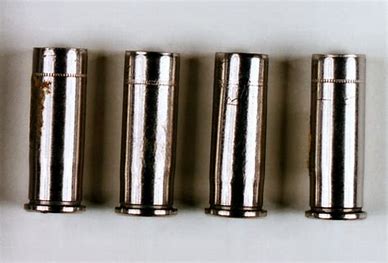
In the Tippit shooting, how are we to explain that the bullets removed from the officer’s body do not fully match the shell casings found at the scene?
First, it’s not even clear how the cartridges found near the shooting ended up there. Revolvers don’t eject shell casings, yet no witness reported seeing the assailant personally empty his gun and discard the casings at the scene.
Also, why would the gunman discard the shell casings? If he was attempting to successfully escape, why wouldn’t he have placed the casings into his pocket as he ran off?
MISMATCHES
As a juror, what would you make of the evidence that the bullets removed from Tippit’s body did not completely match the shell casings found at the scene?
This should be cut and dried physical evidence, don’t you think?
Yet, of the four bullets recovered from Tippit’s body at autopsy, three were manufactured by Western-Winchester and one bullet was made by Remington-Peters.
Of the recovered shell casings found at the crime scene, two were Western-Winchester and two were from Remington-Peters.
The Commission was unable to explain this discrepancy. Further, neither the Warren Commission or the HSCA 15 years later could positively match the four bullets to Oswald’s .38 Smith & Wesson revolver.
Even the shell casings would have been problematic for the prosecutor. To this day, Cairns notes there is no evidence that Oswald bought the ammunition for the revolver confiscated by police at the time of his arrest which the Commission said was used to murder officer Tippit.
The conflicting ballistic evidence, as a skilled defense attorney would have demonstrated, could indicate:
1. There were two shooters with different weapons.
2. There is no absolute evidence linking Oswald to the shooting.
3. The Dallas Police Department tampered with the ballistic evidence or at least badly mishandled the evidence and the related paperwork.
E) WHY WAS TIPPIT THERE?
Although a police dispatch bulletin called all squads to report with caution to a Code 3 alert at Elm and Houston (site of JFK assassination), it has not been adequately explained why a 12:45 transmission directed squad car #10 (Tippit) to venture four miles outside his normal area into central Oak Cliff.
There was no indication of a possible Kennedy assassination suspect in that area and no other reported crime to investigate.
Between 15 and 29 minutes after Tippit responded to his dispatcher, he allegedly encountered Oswald and died violently.
Further, Tippit’s presence in Oak Cliff was unnecessary because the area was being patrolled by officer William Mentzel.
It has not been explained why Mentzel disregarded the dispatch to report to Dealey Plaza and was joined in Oak Cliff by Tippit. One possibility for venturing into Oak Cliff, notes researcher Cairns, is a suspected affair Tippit was having with a woman in that area.
The Tippit family denies it, the police won’t acknowledge an affair and we are left not knowing why the officer was improperly located in the Dallas suburb or how he came to meet up with his killer.
THE UNEXPLAINED CONFRONTATION
The official reason given for Tippit having cause to stop Oswald on the street has been discredited.
It is believed that the police bulletin to be on the lookout for a white male 5’ 10” and 165 pounds came from JFK assassination star witness Howard Brennan, who says he saw the sniper fire from the sixth floor southeast corner window of the Texas School Book Depository Building where Oswald happened to be employed.
However, Brennan at street level, looking up six floors, could only have seen a partial view of the assassin, mostly from the waist up if even that. There’s no way he could have ascertained the height or weight of the man he saw.
Furthermore, Brennan could not identify Oswald in a police lineup later that evening as the man he saw in the window.
Oddly, the suspect’s description that went out to police also mentions that he is armed and dangerous with a 30-30 or some type of Winchester rifle.
It is not known where the weapon information came from but when Tippit met his killer, we know Oswald was not carrying a rifle, nor did he physically match the shorter and much lighter man named as a suspect.
Even if it was Oswald who was halted by Tippit, we do not know what caused Tippit to stop him, get out of his car and feel threatened enough by the encounter to reach for his gun before being shot.
F) FINGERPRINT PROOF?
Cairns also raises the suspicious lack of fingerprint evidence at the scene of Tippit’s death.
At least two witnesses stated that they saw the assailant stop at Tippit’s patrol car and lean into the partially lowered passenger side window to engage the officer in conversation.
Whatever was said escalated the situation. The suspect backed up and away from the squad car as Tippit exited his cruiser and began to walk around the front of the car. In doing so, Tippit began to unholster his firearm only to be beaten to the draw by his assailant, who pumped four shots into the policeman before fleeing.
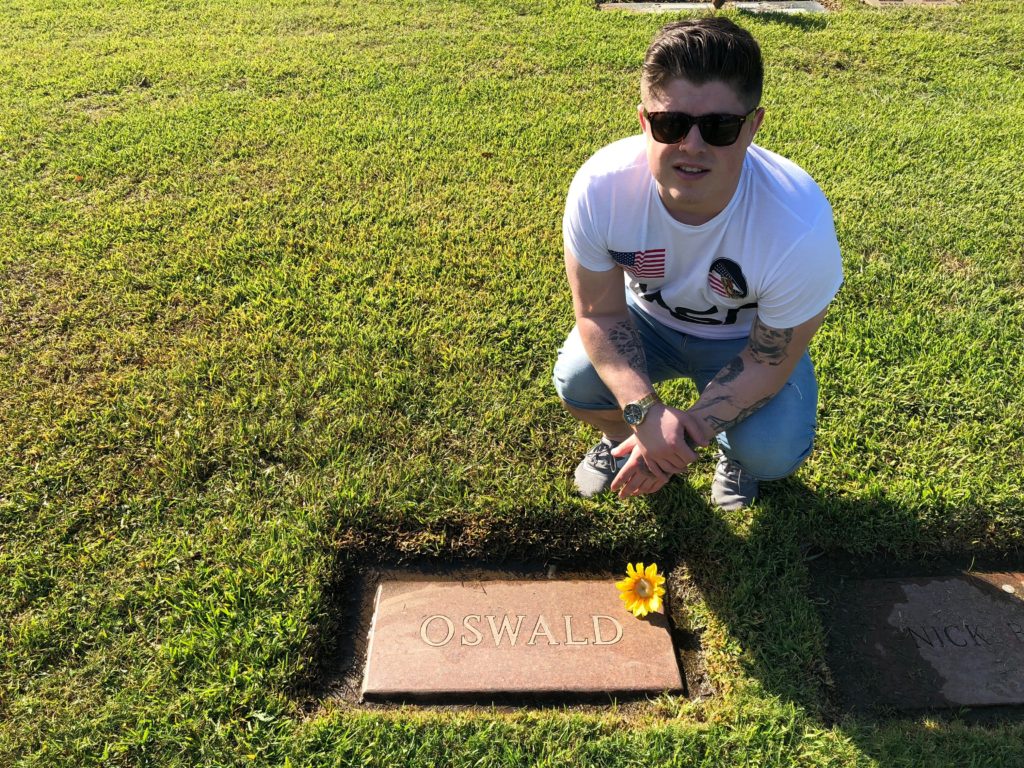
The quandary of this confrontation is the lack of physical evidence implicating Oswald as the cop killer.
The shooter is not known to have worn gloves, so we are at a loss to explain why the executioner (Oswald?) did not leave fingerprints or a palm print on the windshield or possibly the car door, a strange lack of evidence to Cairns.
It’s hard to imagine that the car wasn’t dusted for prints based on the eyewitness testimony and that no physical evidence was detected to help identify Tippit’s slayer.
One explanation may be that when no evidence implicating Oswald was found on the police cruiser, the lack of identifiable prints was downplayed or dismissed to the exclusion of any other suspect.
YET ANOTHER ODDITY
Researcher Johnny Cairns notes one other evidentiary issue that would not have escaped scrutiny in a courtroom as they did with the Warren Commission investigators.
Among them is the issue of wallets found that day that contain the name Lee Harvey Oswald or Alek Hidell, a suspected alias of the accused double murderer.
One wallet was left at the Paine home on November 22, 1963 where Marina and her children were residing.
A second wallet was mysteriously found at the Tippit murder scene and a third wallet was confiscated from Oswald at his arrest.
“Who carries three wallets?” Muses Cairns, who believes the wallet at Tenth and Patton was planted to incriminate Oswald.
Even so, who carries two wallets with duplicate identification?
The wallet at the Tippit murder scene found by Dallas police captain Westbrook contained ID for both Lee Harvey Oswald and Alek Hidell, an alias the Warren Commission would conclude was used by Oswald to purchase the Mannlicher-Carcano rifle found at the JFK assassination site as well as the Tippit murder weapon.
The issue of three wallets allegedly belonging to Oswald would not have been ignored at a public trial, especially given the reports of Oswald or others using Oswald’s name, appearing in multiple places in the Dallas area and acting oddly as if trying to be noticed.
Such bizarre appearances of an obnoxious man in Dallas brazenly identifying himself as Lee Harvey Oswald in the weeks prior to JFK’s arrival include a scene at a car dealership and a rifle range.
The Commission concluded that if these incidents occurred, it was the real Lee Oswald and not someone trying to set him up as the eventual lone-nut assassin of JFK and officer Tippit weeks later.
NO MOCK VERDICT
Over the years, there have been several ‘mock’ trials of Oswald as the accused assassin of President Kennedy with him being found guilty, not guilty and even the occasional hung jury.
However, there has never been a ‘mock’ trial of Oswald for the murder of Dallas patrolman J.D. Tippit, not that a pretend trial would alter the history books.
Instead, we are left to ponder how a guilty verdict or not guilty verdict in a real trial for the Tippit shooting would have impacted Oswald’s trial in the JFK assassination.
Cairns believes that a guilty verdict would have enhanced the prosecution case in the JFK trial even though he argues “For Oswald to have stood trial in either of these cases, you would have needed the evidence to even get him to court and nothing I have ever seen, heard or read has convinced me that he was guilty of either crime.”
Nonetheless, a guilty verdict in the Tippit slaying likely would have been used by the prosecution to demonstrate Oswald’s penchant for violence and would have established a motive to shoot the officer – Tippit was trying to stop Oswald from escaping his earlier crime in Dealey Plaza.
A not guilty verdict, on the other hand, would have thrown the Oswald-JFK murder trial into chaos.
Such a verdict, notes researcher Johnny Cairns, would have been argued as inadmissible by the JFK prosecution but argued as relevant by Oswald’s defense team, leaving it to the judge to decide.
The Warren Commission never did establish a motive for Oswald to kill Kennedy. If found not guilty in the gunning down of Tippit, the JFK trial wouldn’t have been able to link the two killings to Oswald and claim that the cop got in the way of Oswald trying to escape the Dealey Plaza incident.
As it turns out, Jack Ruby voided two trials when he assassinated Oswald and created more than a half-century of endless speculation about two murders on November 22, 1963.
“Both murders were closed within 24 hours of the accused assassin himself being murdered,” notes Cairns. “Some investigation, huh?”
While the JFK assassination has virtually sucked all the conspiracy oxygen out of the room, suspicions raised by Tippit’s wife Marie and J.D.’s father Edgar Lee Tippit have only roused the interest of a handful of reporters and private researchers.
If nothing else, an Oswald mock trial for the Tippit slaying, no matter the verdict, might raise awareness of the mountain of conflicting evidence in the case and further impugn the investigative integrity of the Dallas Police Department, the FBI and the Warren Commission.
As a cop, J.D. Tippit would want us to discover the truth and bring his killer to justice no matter the effect it would have on the murder of his President earlier the same day.
